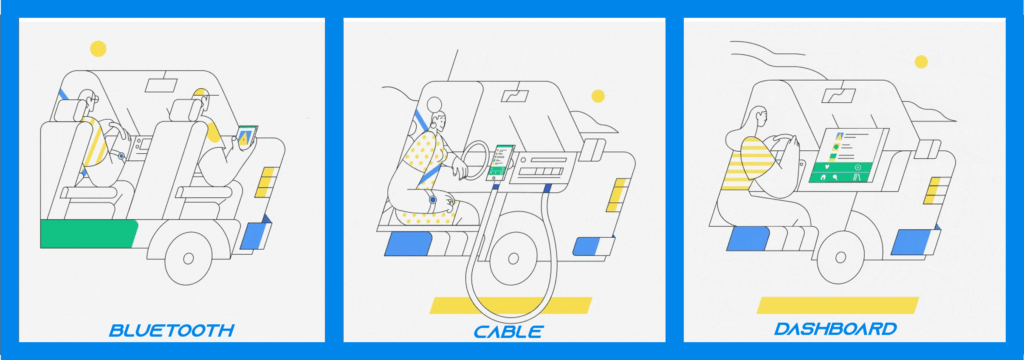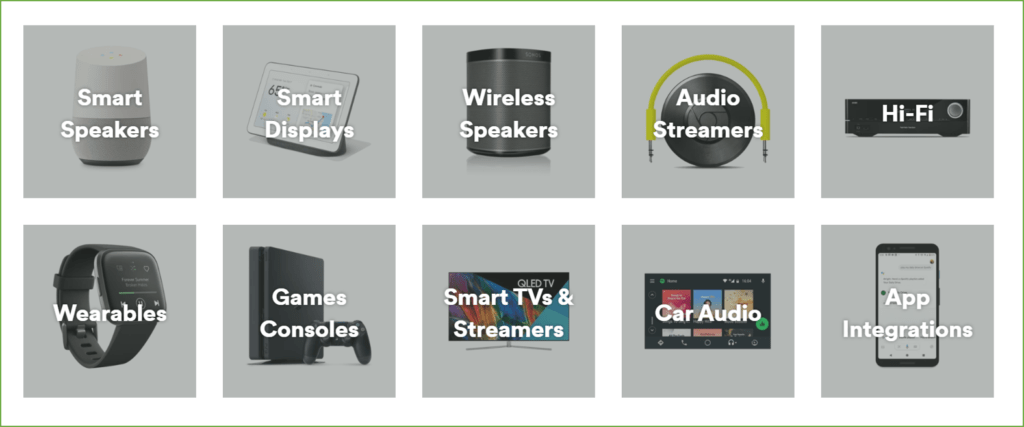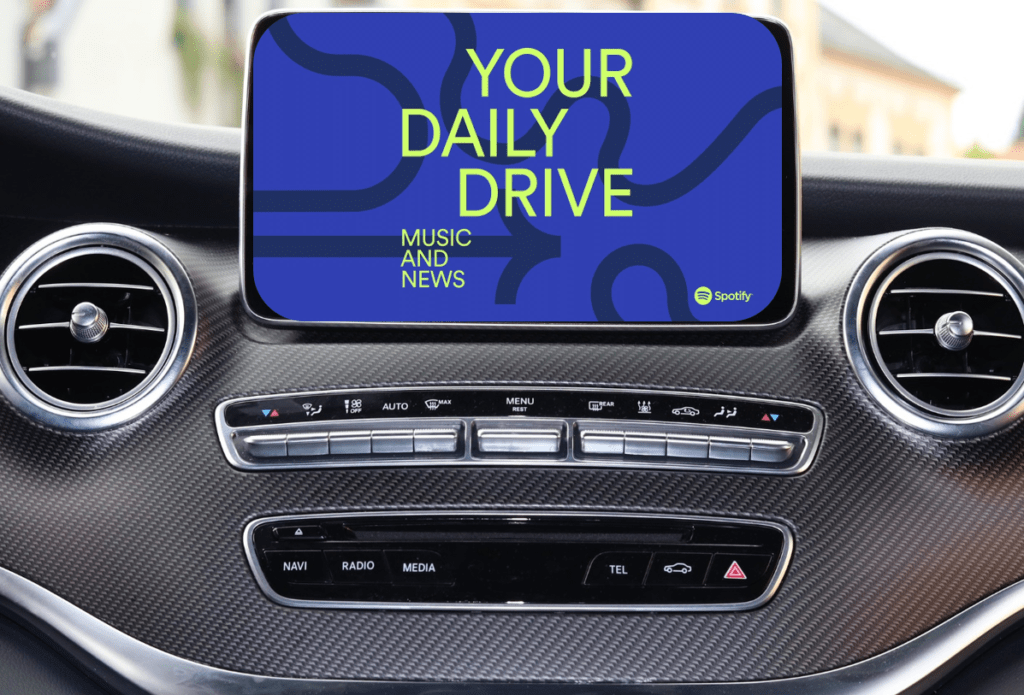
When you’re a new media brand, you don’t really care a whole lot how and where consumers access your content – as long as they do. While broadcast radio may reach more than 90% of American adults each week, there’s not a single digital competitor that comes anywhere close to that claim – including Facebook, Google, and Amazon.
So, they’re always in growth mode – focusing on reach but also on engagement – better known as cume and time-spent listening in traditional radio parlance. While radio’s entire history until recently has been all about transmitters and towers, Pandora, Apple Music, Spotify, and Twitter are all about access on multiple channels and gadgets. It’s all about the consumer, and what’s easy, simple, and accessible to her. In other words, platform agnostic.
Even satellite radio is now actively pursuing other outlets, above and beyond its native home embedded in people’s car dashboards. Now, they’re hustling to get their content on Alexa, and with their acquisition of Pandora, they’re marching in a very mobile direction.
Broadcast radio is a parochial medium – at least in the minds of many of those who have been in the business for decades. Sure, companies are investing in streaming, podcasts, apps, and skills. But at the end of the broadcast day, fortunes are still won and lost on the strength (or weakness) of the terrestrially delivered product.
But as advertising revenues continue to point to digital, and as consumers of all ages increasingly use their mobile devices for just about everything – from waking up to making dinner reservations to listening to music – the winds continue to blow away from traditional media: print, television, and of course, radio.
The good news – as we illustrated in our “Radio Everywhere” blog post yesterday, digital usage by radio’s core listeners continues to increase with each passing year. Perhaps a data scientist could predict at which point in time digital will pass terrestrial access of radio. In whatever year it occurs, we know that day will most assuredly come.
So, how to prepare? What should radio companies be thinking about, aiming toward, and shooting for in 2020, or the next five years?
As many of you know, I conduct a lot of focus groups and one-on-one interviews with real people in both commercial and public radio settings each year. And in just about every one of these sessions, we carve out time to talk about media and technology: smart speakers, social media, audio and video streaming, mobile phones.
Clearly, the level of sophistication is rising, especially among Baby Boomers, many of whom lagged behind their kids – and grandkids – when it came to texting, streaming, podcasting, and other techie endeavors. But these days, more and more of them are fluent with tech and gadgetry; at least enough to be able to use the devices in front of them – in the car, in the home, and in the palm of their hands.
And yet, in every group there are surprises. Some people don’t know their favorite station has an app. Or that they can listen to radio stations on Amazon’s Alexa. Or that a DJ they like has a podcast.
Why would they know unless radio stations make it a point to market their accessibility and content on these new platforms?
That’s what Spotify is thinking. They have a section of their website devoted to all the different ways to utilize their platform – Spotify Everywhere. And it’s aptly named because it’s a clean, easy guide to accessing Spotify pretty much everywhere.

Of course, the success of this page is highly dependent on whether users find their way to this website information, either by intentionally going there or being directed to it via search.
So, Spotify is actively pursuing an outreach strategy with their “Everywhere” initiative. Just the other day, our friend Steve Goldstein received an email highlighting the key ways in which Spotify can be accessed in cars. Again, it’s simple, helpful, and probably eye-opening, even to the most ardent Spotiiy users.
The headline is simple and direct:
Spotify works in your car, and it’s easy!
There are several ways to begin using Spotify in your car.
The graphic at the top of this post is a version of the email content, along with helpful links to enable consumers to get more information on Bluetooth, cable, and dashboard connections.
It’s the kind of initiative any radio station could undertake. But most email blasts that land in my inbox are all about what we’re doing, what we’re promoting, what you can win, or who you should buy stuff from. Rarely, if ever, do they help the audience navigate the complicated digital landscape.
Consumers aren’t walking around with scorecards, noting whether there favorite station has an app, a podcast, a skill. You have to reach out and tell them in the most creative way imaginable.
Spotify doesn’t have personalities or a local flavor. They’re stuck with graphic artists and creative writers. That’s helpful, but certainly not original or buzzworthy.
Radio stations have the best pitchmen and women in town with the skill and credibility necessary to deliver an effective, memorable, and welcome  message that resonates with fans. If you don’t believe that, then why are so many of advertisers paying a premium (hopefully) to have them personally do testimonials and promotions for their products, services, and events?
message that resonates with fans. If you don’t believe that, then why are so many of advertisers paying a premium (hopefully) to have them personally do testimonials and promotions for their products, services, and events?
Because radio works.
And harnessing its power to deliver important messaging about new and exciting ways to enjoy station and brand content is well within the capabilities of most well-branded stations in markets big and small.
But the key is to make this “marketing” a key component part of the on-air strategy. And the beauty is that it’s simple to measure the results – in streams, downloads, and other digital metrics that provide a better look at actual behavior than any rating book.
If any industry understands the growth curve of a brand or even a platform, it’s radio. Just about everyone in the business has been through a “start-up” before. Some of us experienced several station launches. And the goal is always the same:
Grow cume, put up consistent numbers, monetize, rinse, repeat.
So, why would it be any different for digital assets?
Spotify may, in fact, be guilty of doing too many things at once. Their leap into podcasts continues. They’re beta testing a new “Create podcast” feature in conjunction with Anchor, the podcast creation app it bought earlier this year.
And they’ve hired former CBS News head David Rhodes to consult their podcasting platform.
Perhaps one of his first recommendations was to add astrological podcasts – 12 a day – as part of their purchase of Parcast this past March.
They launched “Your Daily Drive,” a personal playlist the mashes up your music  tastes with news features and podcasts as an alternative to radio for the morning commute.
tastes with news features and podcasts as an alternative to radio for the morning commute.
Their metrics magic continues to get better. A new plug-in reveals the level of obscurity of your music choices.
Spotify has added equalizer settings in their app, designed to sweeten the sound of listening while wearing headphones.
And Spotify is mixing wine with songs, collaborating with Tarpon Cellars to create playlists influenced by two of its popular wines.
That’s just in the past few months.
Spotify is operating as if it’s in a drag race, moving at light speed to roll out new features, services, collaborations, and partnerships in an ultra-aggressive growth strategy.
Radio would benefit from both a better multi-platform strategy as part of its own forward-thinking plan to grow its footprint in the digital ecosphere. The industry needs a little giddyup to get its word out about its “everywhere” strategy because that’s exactly what it’s competitors are doing.
It’s a land grab out there. Standing pat is not an option.
We’ll see you next week at The Radio Show in Dallas. Paul and I will be hosting the opening general session: “You’re Not Just In The Radio Business Anymore: Stories From Innovators Who’ve Made The Transformation.”
- What To Do If Your Radio Station Goes Through A Midlife Crisis - April 25, 2025
- A 2020 Lesson?It Could All Be Gone In A Flash - April 24, 2025
- How AI Can Give Radio Personalities More…PERSONALITY - April 23, 2025




Broadcasters are the consistent creators. Head in the sand CYA’s are missing cost-savings, money demos, profit from audience attracting content & connections. Here’s to a thought providing Dallas.
I’m right there with you, Clark. see you in the Big D.
Bad content everywhere is still bad content!!!
That is, of course, true.
Radio absolutely needs to move forward and be present on all platforms.
But we need to see realistic and fair collaboration from rights holders and the music industry that impacts our ability to do so.
As an owner & programmer in a format that promotes many new, independent and regional artists, I know the artists, their teams, and even most labels understand that we’re partners in promoting their work and connecting art with audience.
But for our digital growth and long term viability, the “powers that be” at the top levels of industry and government regulators have to see radio and its growth in digital as a partnership, not look at all stations as cash cows lined up for the milking. Especially when it comes to smaller local stations & groups that don’t fit either non profit or nationalized models.
We in radio want to see artists and content creators able to make a living and create more of what our audiences love. We want to see people listening to your music and going to your concerts. And we want our audiences to be able to access us wherever they are and however they choose to do so.
Until big music and government view independent radio as not only a source of revenue, but an actual partner, everyone loses. Smaller stations are held back from digital growth, artists miss out on audience and promotion from voices listeners trust, and the long term viability of both independent broadcasting and the entertainment business suffers.
Matt, you are right that when money gets tights, emotions run high. Each side feels it is deserving of a larger piece of the pie, often at the other’s expense. Hopefully, those “powers that be” will come to terms, or leave it to the courts to decide.
For the record, there is no doubt in my mind that stations like yours – as well as Z100 and WMMR – make a huge contribution to exposing and extolling new music and new artists – even before there was Spotify and streaming.
Thanks for the note.
Fred,
There is something I don’t understand. What is the difference between Sirius and Pandora other than one is delivered by satellite and the other by cell site? If Sirius merged the two services or ran the same content on both what would happen? I assume the lower-priced service would cannibalize the higher-priced one, as Sirius customers shift to Pandora. This I assume is a key problem Sirius needs to solve.
Steve
They do indeed, Steve. Cross-pollinating the content while retaining the value proposition goes to the heart of the issue. These integrations are often not seamless and more than a little gnarly How the company “tiers” its services will go a long way toward determining whether the investment in Pandora was a good one. I suspect in the long run, it will be. Thanks for chiming in.
I’m not sure I buy in fully on this. While there is no harm – probably some good in promoting all of the available platforms for radio, I think for many, in the car, easy to access and free are the main reasons people listen to radio. Once you’re on Alexa, a phone, a laptop/PC, or even an embedded app in a car, radio’s ease of access edge is gone, its flaws are more obvious and it loses out to other options.
I guess I’m saying is that people don’t chose radio so much cuz its awesome, I think they chose it because its there and easy. On equal footing with Spotify, it could be really ugly for radio. Maybe the focus should be more on product than platform.
You are right, Bob = radio’s simplicity – it’s “one-button solution” as I heard Tim Westergren refer to it once – is at the root of its appeal. But these days, clock radios, stereo systems, boom boxes, etc. are disappearing from homes, workplaces, and other locations where they were once ubiquitous. It’s of paramount importance consumers are reminded they can still listen to their favorite station or morning show on “radios” – mobile devices, laptops, smart speakers. Thanks for writing – good to hear from you.